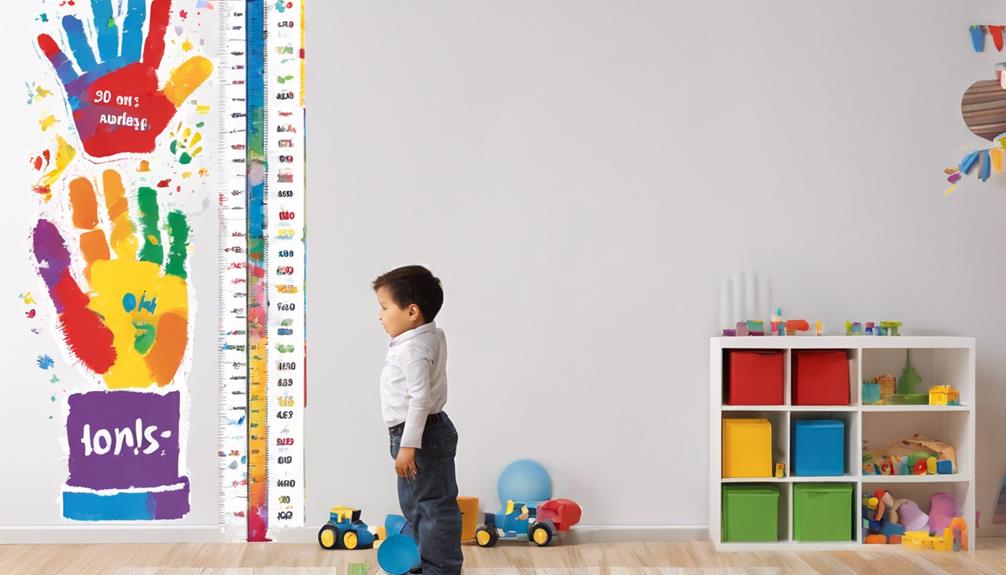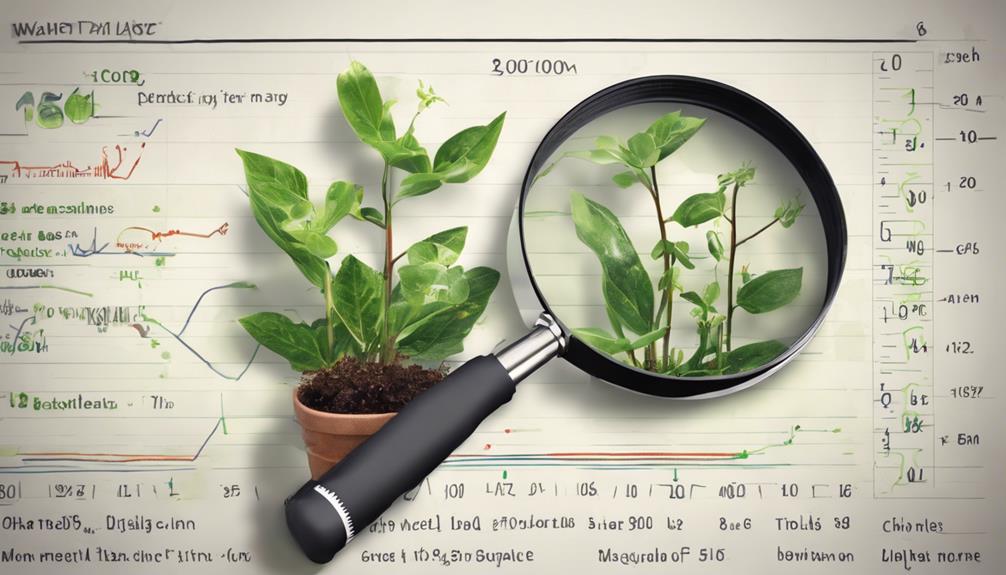As we navigate the journey of nurturing young minds, envision a tapestry of growth unfolding before us. With each thread representing a unique aspect of a child's development, we aim to weave a pattern of understanding and support.
However, what if there were five distinct tools that could help us thread this tapestry with precision and insight, offering a roadmap to make sure that each child's potential blossoms to its fullest?
Let's explore these tools that hold the key to revealing the secrets of childhood growth and development, guiding us on a path towards fostering thriving individuals.
Key Takeaways
- Use growth charts to track weight, height, and head circumference for accurate monitoring.
- Observe developmental milestones like sitting, crawling, walking, and speaking to detect delays.
- Conduct health check-ups and nutritional assessments for early issue detection and intervention.
- Collaborate with parents and teachers to create a supportive environment for optimal growth and development.
Growth Chart Tracking
Utilizing growth charts facilitates the systematic monitoring and evaluation of children's physical development parameters over time, aiding in the early detection of potential growth-related anomalies. Monitoring a child's growth through accurate measurements of weight, height, and head circumference at different ages provides valuable insights into their overall development trajectory. By regularly updating a child's growth chart, healthcare providers can track the progression of growth over the years, ensuring that the child is growing within expected ranges for their age.
These growth charts, based on WHO and ICMR standards, serve as essential tools in identifying deviations from normal growth patterns, such as stunted growth or obesity, enabling timely intervention when necessary. Comparing a child's growth curve with established norms allows healthcare professionals to pinpoint potential issues early on and address them effectively. Through the systematic use of growth charts, caregivers and healthcare providers can collaborate to optimize a child's growth and development, ensuring a healthy and thriving future.
Milestone Observation

Milestone observation in child development involves systematically tracking specific developmental achievements such as sitting up, crawling, walking, and speaking to monitor progress and identify potential issues. By monitoring these milestones, caregivers and healthcare providers can recognize any developmental delays early on, allowing timely interventions and appropriate support for the child's healthy growth and development.
| Developmental Milestone | Expected Age Range | Importance |
|---|---|---|
| Sitting Up | 4-7 months | Strengthens core muscles. |
| Crawling | 6-10 months | Promotes coordination and exploration. |
| Walking | 9-15 months | Enhances mobility and independence. |
| Speaking | 12-24 months | Facilitates communication and language development. |
Tracking progress in these specific areas not only helps in understanding the child's development but also makes sure that any developmental issues are addressed promptly through early intervention strategies. By monitoring milestones closely, caregivers can provide the necessary support to help children reach their full potential.
Regular Health Check-ups

Regular health check-ups play a crucial role in monitoring and safeguarding the overall well-being and development of children. When it comes to monitoring growth and development in children, health check-ups act as essential tools for ensuring a healthy child.
- Early Detection: Health check-ups enable early detection of any health issues in children, allowing for timely interventions and treatment.
- Weight Assessment: During these check-ups, health professionals monitor the child's weight in relation to height. This assessment helps in accurately evaluating the child's nutritional status and growth progress.
- Nutritional Guidance: Health check-ups also involve providing parents with nutritional advice tailored to the child's needs. This guidance guarantees that the child receives the necessary dietary intake for the best growth and development.
Developmental Assessments

In the context of monitoring growth and development in children, shifting to developmental assessments involves a thorough evaluation of key areas such as motor skills, language development, social interactions, and cognitive abilities. It is important to conduct these assessments regularly as they aid in early detection of any developmental delays or challenges that a child may be facing. By utilizing standardized tools like the Ages and Stages Questionnaires (ASQ), health workers can screen for potential issues and provide necessary support for best development. Monitoring a child's progress through developmental assessments is important as it allows for timely interventions to make sure that the child is growing and developing according to established child Growth Standards.
| Key Areas | Importance |
|---|---|
| Motor Skills | Make sure the child's physical development |
| Language Development | Assess communication abilities |
| Cognitive Abilities | Evaluate problem-solving and thinking skills |
Parent-Teacher Communication

Effective communication between parents and teachers plays a pivotal role in facilitating a child's holistic development and academic achievements. Here are three key ways in which parent-teacher communication can impact a child's growth and development:
- Early Detection of Developmental Issues: Regular updates and discussions between parents and teachers can help identify any areas where a child may need additional support. This can lead to early intervention programs that address concerns such as growth failure or developmental delays in infants and young children.
- Tailored Support Strategies: By sharing specific observations and insights about a child's progress, parents and teachers can collaborate to create personalized strategies that support the child's learning and development. This tailored approach can lead to improved outcomes in areas such weight gain, height for age, and overall growth curves.
- Creating a Supportive Environment: Parent-teacher partnerships foster a supportive environment that nurtures a child's academic and social growth. Open communication channels allow for a collaborative approach in addressing any developmental concerns, ultimately creating a positive space for the child to thrive.
Frequently Asked Questions
How Would You Monitor the Growth and Development of Children?
We monitor growth and development in children by measuring key parameters, tracking progress with growth charts, evaluating developmental milestones, and using screening tools for early detection. Regular health check-ups and nutrition guidance are essential for best outcomes.
How Do You Measure Growth and Development of a Child?
We measure growth and development in children through evaluating weight, height, head circumference, and behavioral milestones. These metrics provide insight into physical and cognitive progress. Regular monitoring enables early intervention and promotes best health outcomes.
What Is the Best Way to Monitor Children's Development?
We track children's development best by combining growth monitoring with developmental screenings. This guarantees a holistic approach to identifying potential issues early, facilitating timely interventions. Involving caregivers and healthcare providers in monitoring fosters thorough support for children's growth and development.
How Do You Assess for Growth and Development in Children?
We assess children's growth and development through measurements like weight, height, and head circumference, tracking progress with growth charts. Regular monitoring helps us detect issues early. Utilize standardized tools for accurate evaluation and seek professional guidance for interpretation.
Conclusion
In summary, by carefully monitoring growth and development in children through various methods such as growth chart tracking and milestone observation, we can safeguard their well-being and address any concerns early on.
It's essential to involve parents and caregivers in this process to provide necessary support.
Remember, the irony lies in the fact that sometimes, the smallest changes can have the biggest impact on a child's future health and development.










